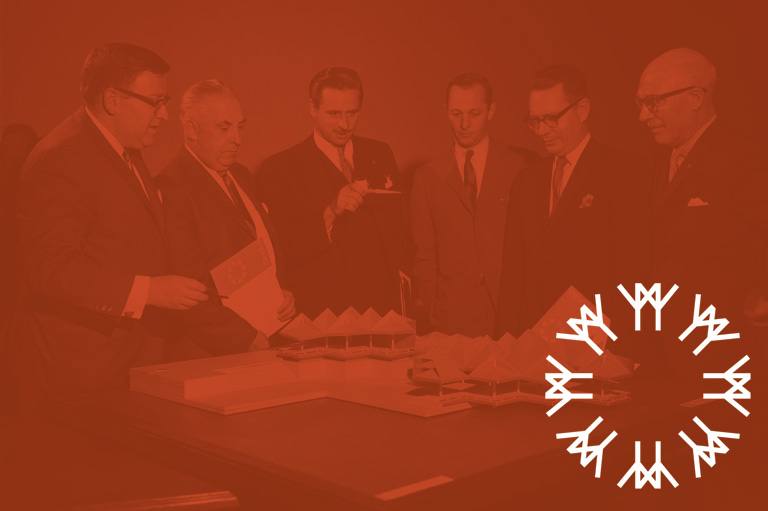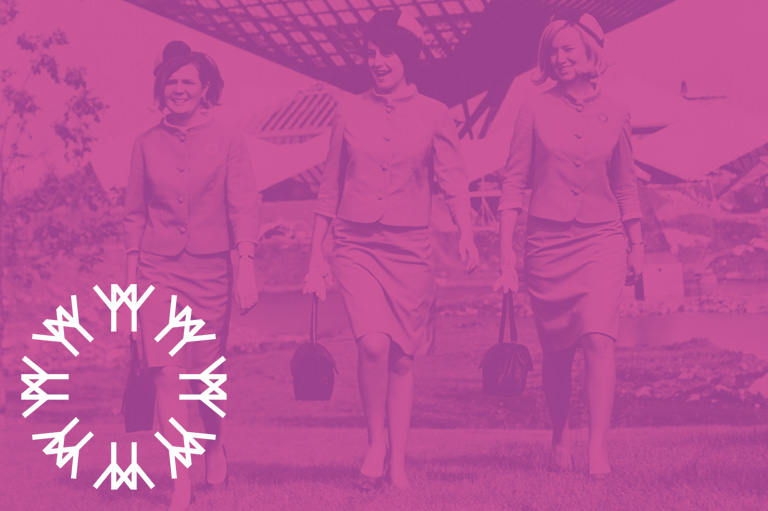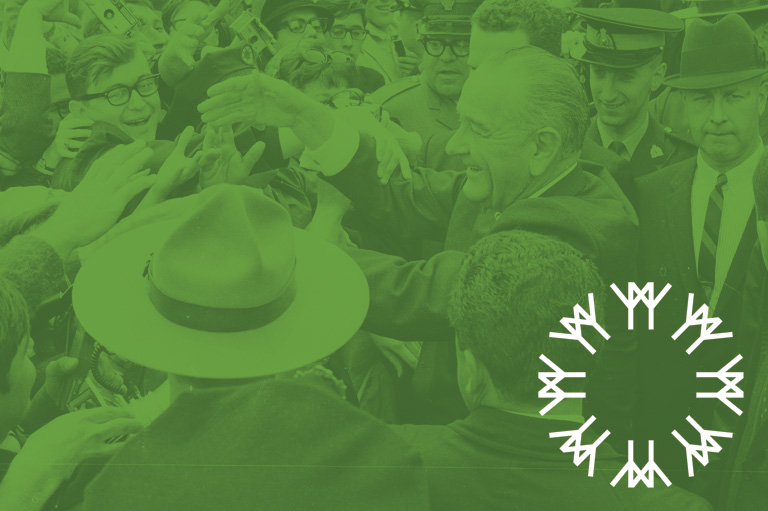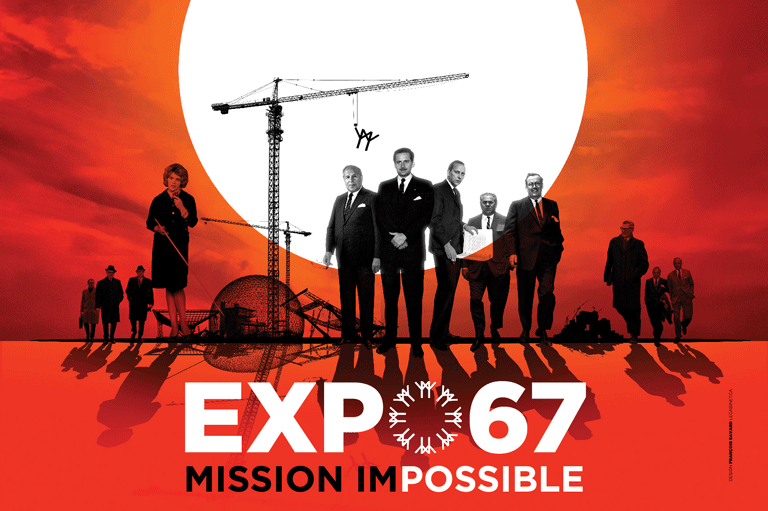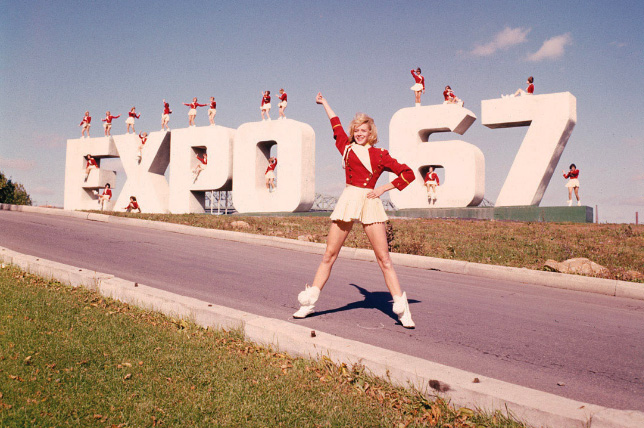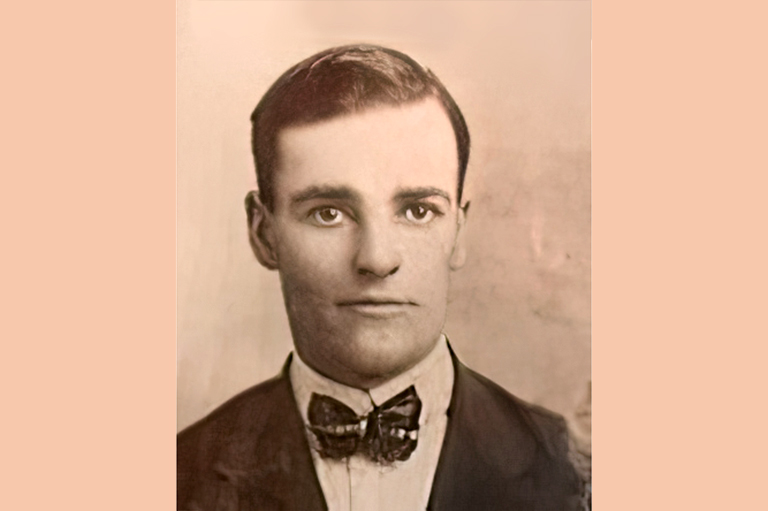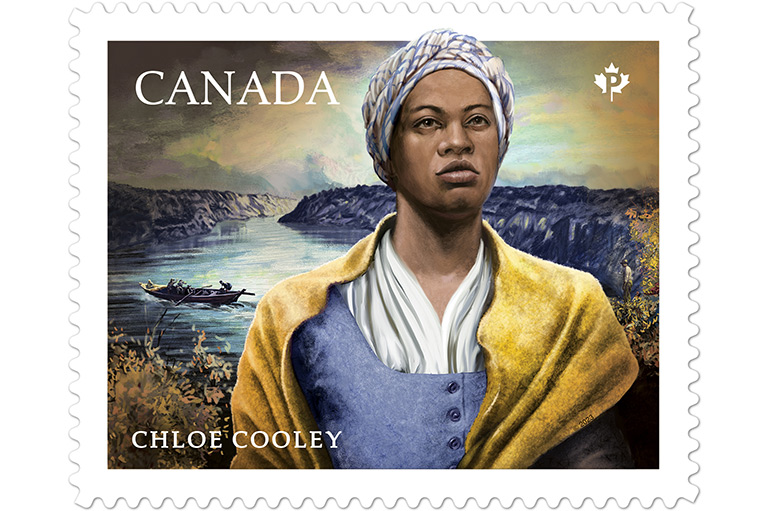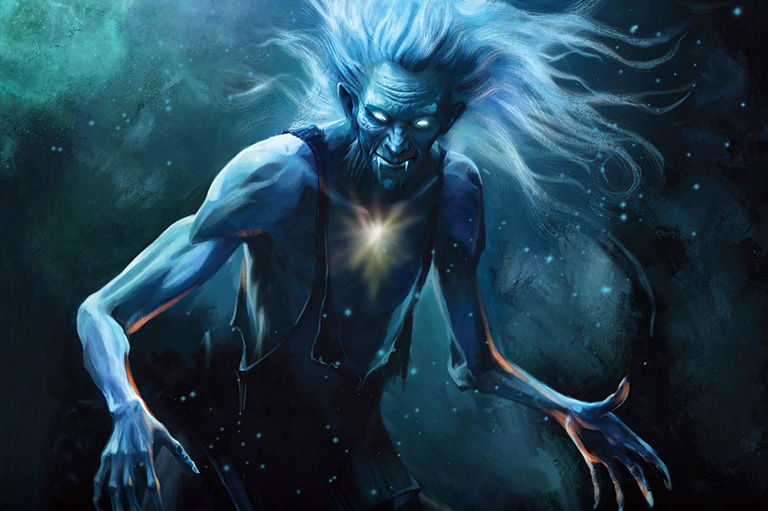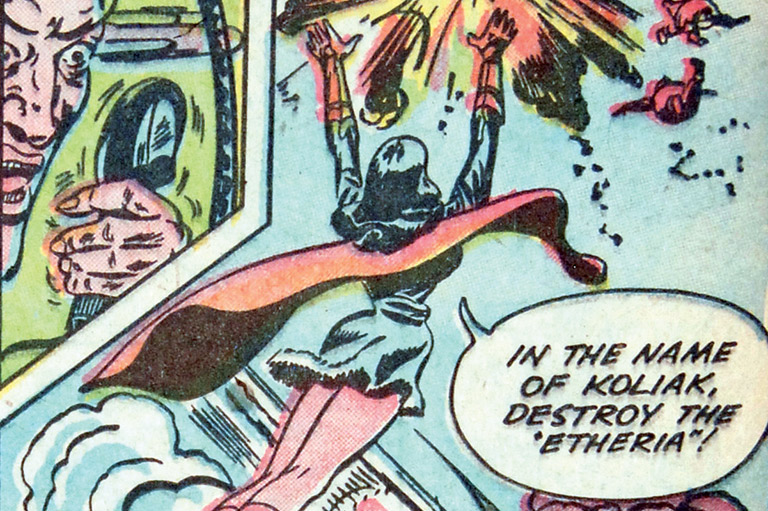Discover a wealth of interesting, entertaining and informative stories in each issue, delivered to you six times per year.
Welcome to Utopia
Nothing of the sort had ever been seen in Canada, or in North America, for that matter: five thousand films (thirty a day!), fifteen thousand artists, thousands of works of art. Expo 67 gave the public a chance to discover spaceframe architecture, interactive film, hands-free phones, landscape architecture, and fully agile urban planning.
Article follows below...
-
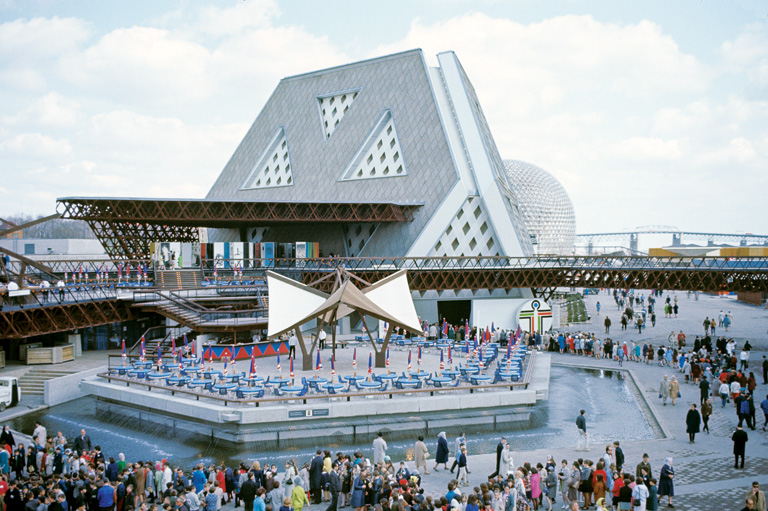 People line up for the Man the Explorer complex. It featured four exhibit areas, including Man and Life; Man, his Planet and Space; Man and the Oceans; and Man and the Polar Regions.Library and Archives Canada & Expo 67 Mission Impossible
People line up for the Man the Explorer complex. It featured four exhibit areas, including Man and Life; Man, his Planet and Space; Man and the Oceans; and Man and the Polar Regions.Library and Archives Canada & Expo 67 Mission Impossible -
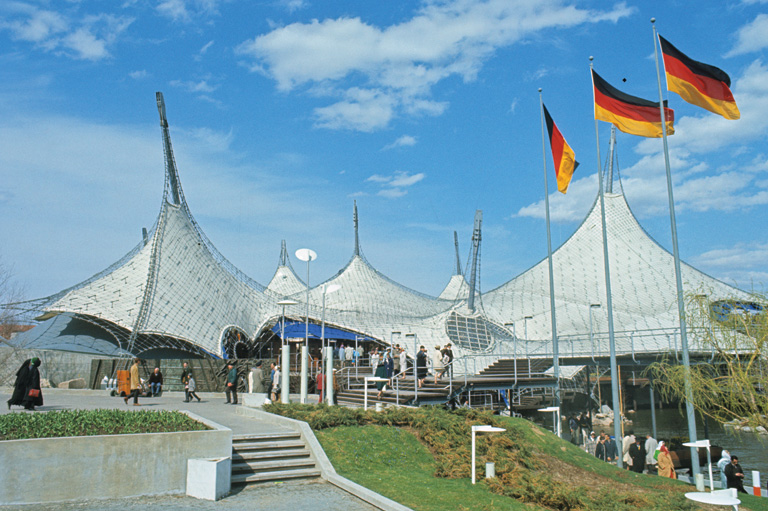 The West German pavilion.Library and Archives Canada & Expo 67 Mission Impossible
The West German pavilion.Library and Archives Canada & Expo 67 Mission Impossible -
 A scale model of Habitat 67.Library and Archives Canada & Expo 67 Mission Impossible
A scale model of Habitat 67.Library and Archives Canada & Expo 67 Mission Impossible -
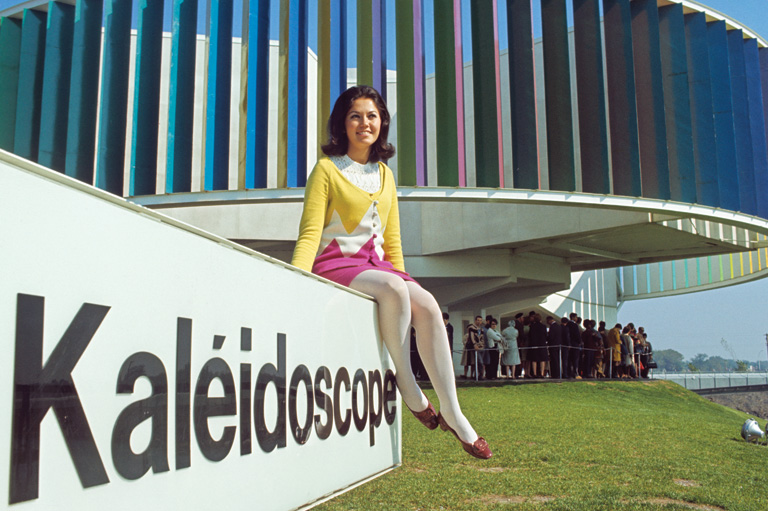 A woman sits in front of Kaleidoscope, a pavilion dedicated to Man and Colour.Library and Archives Canada & Expo 67 Mission Impossible
A woman sits in front of Kaleidoscope, a pavilion dedicated to Man and Colour.Library and Archives Canada & Expo 67 Mission Impossible -
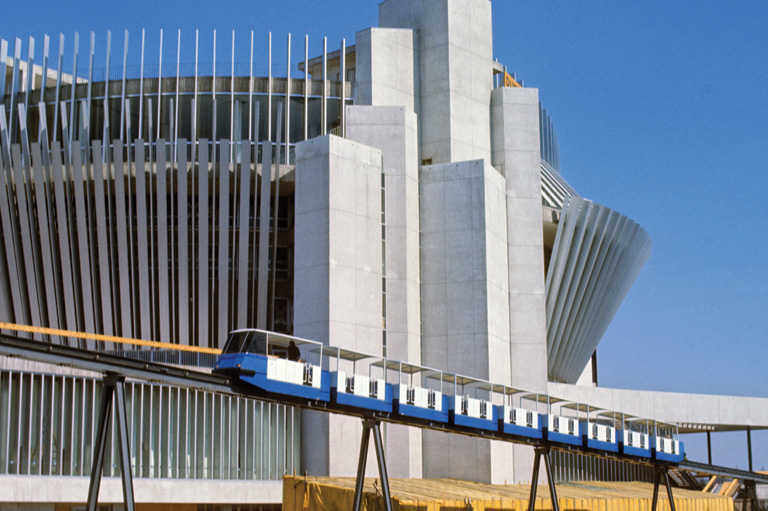 The Minirail glides past the French pavilion.Library and Archives Canada & Expo 67 Mission Impossible
The Minirail glides past the French pavilion.Library and Archives Canada & Expo 67 Mission Impossible -
 The People Tree, formed from orange and red fabric featuring images of Canadians.Library and Archives Canada & Expo 67 Mission Impossible
The People Tree, formed from orange and red fabric featuring images of Canadians.Library and Archives Canada & Expo 67 Mission Impossible -
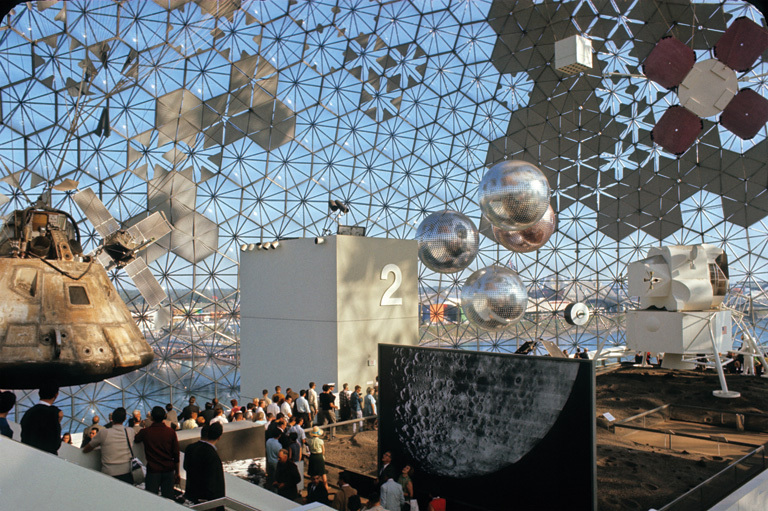 Space exploration dominates the American pavilion.Library and Archives Canada & Expo 67 Mission Impossible
Space exploration dominates the American pavilion.Library and Archives Canada & Expo 67 Mission Impossible -
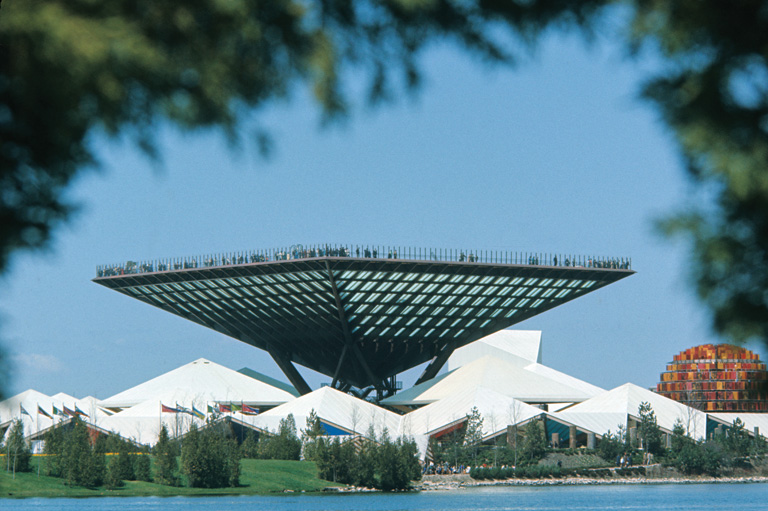 Katimavik at the Canadian pavilion.Library and Archives Canada & Expo 67 Mission Impossible
Katimavik at the Canadian pavilion.Library and Archives Canada & Expo 67 Mission Impossible
Expo 67 was a triumph of modernity in virtually everything it touched. It was an expression of an ambition, an era, and a dream. “The people who built Expo were thinking big,” Robert Fulford wrote in This was Expo. “They wanted it to be beautiful, but grandiose as well; they succeeded.”
In the commemorative book Terre des Hommes/Man and His World, author Gabrielle Roy writes about her visit to the site six months before it opened: “It was the highly developed outline of a city, partly emerging from the water, partly surrounded by water, a unique city not to live in but to visit. … As soon as I set foot there, I was transported to another place. A thousand details, a thousand perspectives that were striking, captivating and enchanting. … It formed a landscape in the image of modern man like I had never seen before.”
Fulford agreed: “There was so much that was new and never seen before, so much daring even, that it was like seeing a new world of architecture be born; we thought we were seeing the beginnings of a revolution.”
Expo 67 made architectural flights of fancy possible: cubist and traditional, shingles, ceramic, steel, concrete, and logs. The German pavilion was a fifteen-storey plastic tent. The Dutch pavilion was a giant assembly of aluminum tubes. With Habitat 67 and the geodesic dome, architects Moshe Safdie and Buckminster Fuller left Montreal two monuments that would become part of its lasting identity.
Everything was done to convey an idea of the times — real or imagined. Expo 67 proposed the new idea of a carless city, where everything is clean and people get around by foot, bike, gondola, or a half dozen means of mass transit, such as the metro, the Minirail, an aerial tram, a shuttle ferry, and even hovercraft. Street furniture — phone booths, streetlights, even garbage cans — was designed for visual appeal. Even the pictogram signage was new — generating a great deal of consternation around the bathrooms, where people weren’t used to signs representing a man and a woman (an Expo 67 invention).
Expo 67 was such a success in interactivity, design, architecture, and culture because its organizing committee had understood early on that they had to do more than organize — they had to provide artistic direction. Like previous world’s fairs, there had to be a theme. The theme the committee came up with was Man and his World.
Organizers also set the mission of creating a variety of pavilions to illustrate the theme — such as Man the Exporer; Man the Producer; and Man in the Community — that were as popular as the various country pavilions.
The committee tried to impose its educational, humanist vision on every exhibitor, whether they were countries, associations, or private interests. As a result, the Kodak pavilion educated the public about photography, rather than selling Kodak products.
Expo 67 aspired to be a utopia. Expo 67 aspired to be, and was, a window on the “future today.” Moving beyond consumerism, 1967 was a year of optimism, a year when everything was possible, a year when the future was literally within reach.
Sign up for any of our newsletters and be eligible to win one of many book prizes available.
We hope you will help us continue to share fascinating stories about Canada’s past.
We highlight our nation’s diverse past by telling stories that illuminate the people, places, and events that unite us as Canadians, and by making those stories accessible to everyone through our free online content.
Canada’s History is a registered charity that depends on contributions from readers like you to share inspiring and informative stories with students and citizens of all ages — award-winning stories written by Canada’s top historians, authors, journalists, and history enthusiasts.
Any amount helps, or better yet, start a monthly donation today. Your support makes all the difference. Thank you!
Themes associated with this article
You might also like...
Save as much as 52% off the cover price! 6 issues per year as low as $29.95. Available in print and digital.



